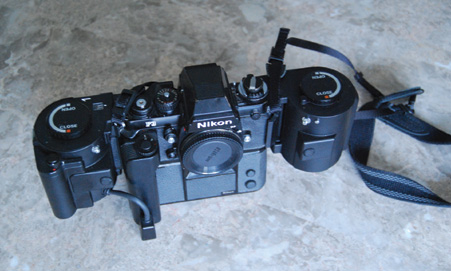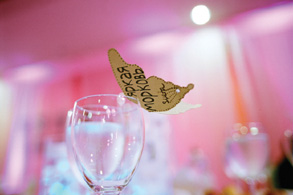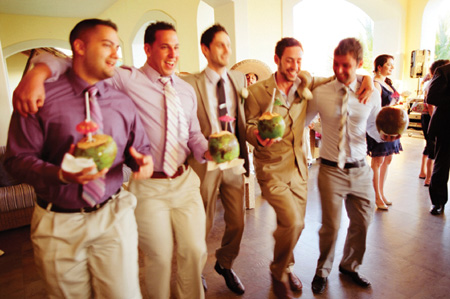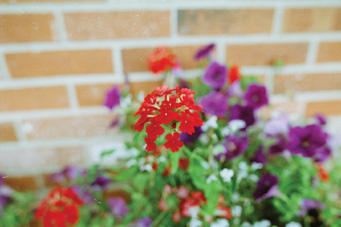8 Movie Films for Still
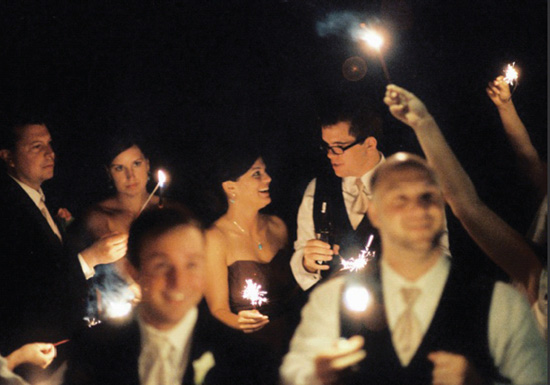
Sometimes I don’t want to shoot normal 35mm professional film. Sometimes I want more. I want cine film. Both Kodak and Fuji make professional color negative movie films that are tungsten (white-balanced to incandescent, based at 3200K like a normal indoor lightbulb) and daylight (white-balanced to the sun, at 5000K) based and have incredible exposure latitudes and color saturation. These are the films on which Hollywood films are shot. There is nothing better in the analog world.
Shooting movie film presents some problems for 35mm still shooters. First, it’s only available in hundreds of feet. A normal 35mm cassette has five feet of film in it. So you need to do one of two things: You can get a 200-foot bulk loader (a daylight device into which you load film in a darkroom—but then you can use it in open daylight to load normal 35mm cartridges yourself), or you can get a camera with a bulk back, such as a Nikon F3 with an MD4, and shoot 250-exposure rolls that need to be loaded in the dark. I have tried both methods, and neither is super easy; I always feel as if I’m going to mess up something! In reality I haven’t, but the room for error is marginal.
Shooting bulk film was the answer to shooting long events without needing to change rolls of film often. Today it’s a hassle—I have to load the film in a completely dark bathroom. Plus, not many labs can process the 30-foot rolls of film that bulk cartridges take.
There are still many photographers shooting on bulk film backs. The Brothers Wright use the same setup as me and are the reason why I got into shooting bulk film. There are Canon and Olympus versions of bulk packs as well.
My F3 with the 250 bulk pack. This is a tricky camera to use. It operates like a normal F3, but you have to be sure all the knobs are in the right direction and that the film canisters are loaded and positioned properly. A mistake can cause you to end up with scratched film—or, even worse, the film won’t take up on the take-up reel, and you won’t be shooting your film. If you’re not paying attention to the take-up reel spinning, showing that the film is spooling and being taken up, you’re in trouble. Each cassette holds 250 shots, or about 30 feet of film, and is wound into another empty cassette. I like to fire about 20 shots at the beginning and end of each roll, just in case the ends get damaged at the movie lab or exposed to light.
Developing ECN2 Film
The next problem is getting the film processed. Not a lot of movie labs are willing to process short lengths of 35mm, because their machines are set up to do 400-foot rolls (or greater), not rolls under 100 feet. There are a few labs, such as the ECN-2 lab (www.ECN-2.com) in California, that will process it by hand for you and sell you the film loaded into 35mm cartridges—they’re your best bet. You can’t take it to a normal photo lab to process in C41 chemistry, because the film is made to be processed under a different chemical mixture and process called ECN2. The film is also coated with a chemical to keep it static-free in high-speed cameras; this is removed first in normal ECN2 processing but would gunk up on the negative in a normal C41 process.
Images shot on Kodak 500T, pushed two stops to 2000.
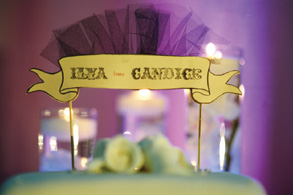

I love shooting cine film for two great reasons. First, its exposure latitude is insane, and I can easily push Kodak 500T to ISO 2000 and get almost grainless images with great contrast and color. Second, the films are available in tungsten, so I can shoot tungsten-lit receptions and not worry about people looking orange.
The slower-speed daylight films are just as amazing as the highspeed films, giving negatives that are smooth and great for scanning. I love Kodak 250D for its ultra-realistic tones and detail from highlight to shadow. I have not seen another 35mm still film come close to its quality.
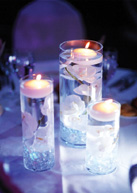
“The slower-speed daylight films are just as amazing as the high-speed films.”
Images shot on Kodak 250D at 200.

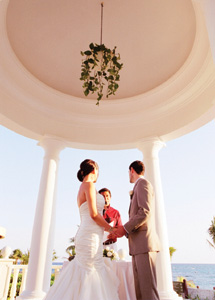
Note that when shooting tungsten movie film outside during the day, you need to use an 85B filter to compensate for the blue daylight; otherwise, your images will come out blue. The filter is orange and warms the blue daylight to the correct white balance for the film. You can also do this in post, but it’s easier to do it while shooting so you don’t have to Photoshop and color-correct all your shots afterwards.
In the past, I had to deal with the headache of buying and loading cine film for still use, but now I don’t have to. Movie film is awesome. There is nothing else that compares to its latitude and color rendition. Up until now, it has been hard to shoot, but now that the ECN-2 lab is up and running, you can buy it from them, and they will process, develop, and scan it for you.
NOFEAR
Be patient and wait. Don’t just blast photos away. Remember, you only have 36 shots to a roll. Make them count!
If you want to be brave and go to a non-pro lab, you can take movie film and process it at your local minilab. Just load it into normal 35mm cassettes and don’t tell them it’s movie film. I don’t recommend doing this to a lab you like or to a pro lab, as the rem jet on the film can gunk up their machines, and rolls processed after yours may have spots on them. If you want to try it at a drugstore one-hour processing place, you should be fine—but the next guy’s roll may be a bit spotty.
In case you’re wondering, rem jet is a carbon coating on the base side of ECN2 film that is supposed to protect it against static buildup when it’s being used in movie cameras and moving really fast. This rem jet has to be removed for you to scan or print the film. When you develop the film, it will come off and leave a sticky, gunky black mess. If you don’t clean it correctly, it can ruin your negatives and make a mess. And if you run it through a C41 mini lab machine, particles of it will come off and stick to parts in the machine and possibly onto the rolls.
Doing this will result in the lab thinking your film has gone bad or has not come out, because the negatives will come out of the processor covered in the black rem-jet coating. But all you have to do is wipe it off with a sponge, and you’ll have good negatives. The problem with the C41 process, though, is that the chemistry is not the same as in the ECN2 process. The colors and contrast will not be perfect, as they would if the film was processed normally with ECN2 chemistry.
The other viable option is to hand-develop your ECN2 film in C41 chemistry in your sink or darkroom. Developing color film is very much like hand-developing black-and-white film, except that the temperatures are much higher—the developer has to be at 103 degrees. I have been having my lab hand-develop my ECN2 film for a while, and it comes out awesome. I haven’t had any issues; I’ve been shooting Kodak 250D and 500T and having the 500T pushed a stop. It’s an easy process—the only step that is different than developing BW is that you have to wash the rem jet coating off the film before you stabilize it. So far, I’ve been doing this with a sponge and a water jet, but I really need a good film-scrubber washer, and that will have to be built for it to be done right. The rem jet does come off easily, but you have to make sure you get it all, or it will become hard after the stabilizer, and then it’s more difficult to remove.
If you want to do this at home, there are plenty of C41 at-home kits available at most pro camera stores or websites. Check out BH, Adorama, Hunt’s, and Freestyle Photo for an at-home color kit, or just send your film to the ECN-2 lab.
Examples of 500T and 250D developed in C41.
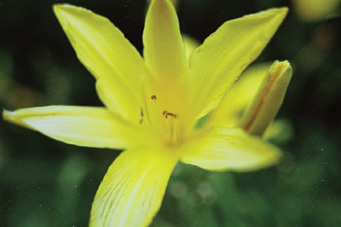
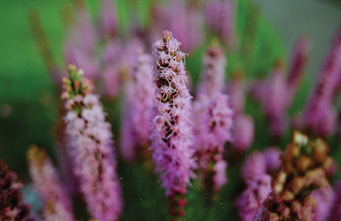
ECN2 films from Kodak and Fuji, such as 500T, are really the only viable solutions to shooting high ISO color film in low light. The results are much better than shooting 400-speed or 800-speed C41 film and pushing it in tungsten light. These films are also designed to be scanned, whereas C41 film is meant to be printed optically. Try some, and you’ll see the difference.
Your options for shooting and developing these films are getting better. You can do it all yourself with a bulk loader, you can buy it prepackaged with developing and scanning from www.ecn-2.com, or you can shoot it in bulk lengths and find a movie lab to develop it. I personally think the ECN-2 lab (www.ecn-2.com) is your best bet—or developing it yourself.
Shooting 500T
Shooting 500T is not all that different from shooting normal C41 films, but there are a few things to keep in mind about it.
As mentioned previously, it is a tungsten-based film, made for tungsten light, not daylight. If you shoot it in daylight, your images will have a blue tint. You can correct most of this in scanning or post-production, but you cannot fix it 100 percent. If you’re going to shoot in straight daylight with it, it’s best to use an 85B filter or a warming gel to correct for the blue cast. If you’re shooting in mixed light or full tungsten, then you’re fine without a gel or filter.
NOFEAR
Don’t be afraid to ask others for help. Join a film-users group online and discuss your problems or successes. There’s no better way to learn!
Also, at box (or rather, can) speed, this film is 500 in tungsten and 320 in daylight with a gel. That’s box speed—and at that, you are really overexposing a bit. This film is truer to being an ISO 800 (the box speed should be 800, but the film looks better overexposed at 500) film than a 500, but that’s due to the high latitude and dynamic range it has. You can easily shoot this film at 800 or 1000 without any pushing and get good results. It does depend on the lighting, though. I always try to overexpose this film. If my meter tells me to shoot at 1/60 at f/2, I’ll shoot at f/1.8 or f/1.4—the more light, the better.
If I want to push the film, I can shoot it at 1600 and 2000 without any issues. I usually only ask for a one-stop push in development when I rate it at 1600. For 2000 or 3200, I will ask for a two-stop push. Depending on the light, you may want a two-stop push, but it will depend on how your lighting was and whether you were able to overexpose. If you rate it at 2000, try to overexpose when you can and shoot more like it was 1600; otherwise, shadow detail will be gone.
If you’re shooting 500T at a wedding, and there is a video guy shooting with a bright video light, make sure he’s using it set to tungsten. If he’s shooting with daylight-balanced LCD, it will create a blue cast on your subjects, so ask him to gel his light or change its white balance. I always bring gels with me so that I can match color temp on my flashes, too. If I decide to use flash I make sure to gel it—I don’t want a funky blue cast on my images.

